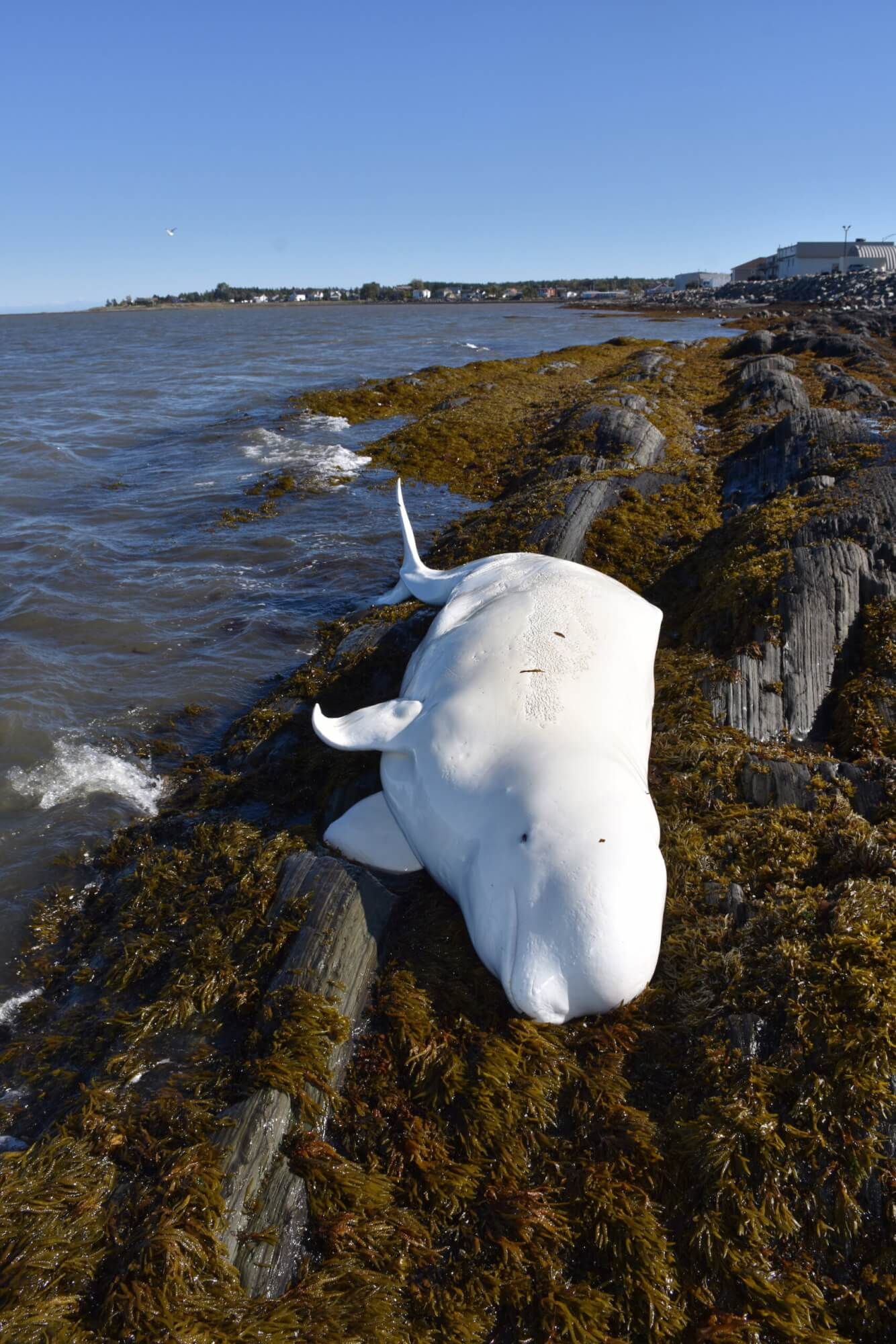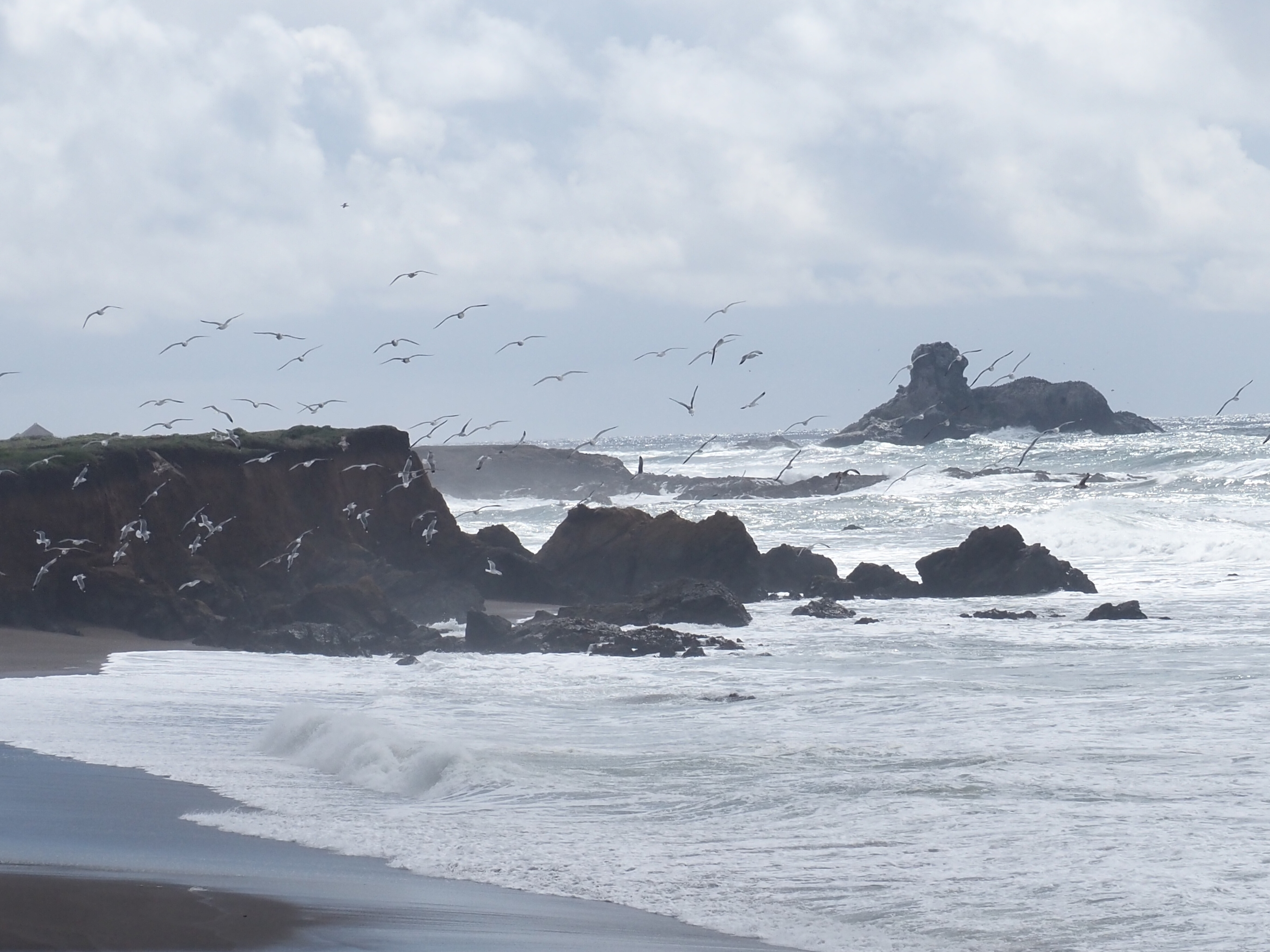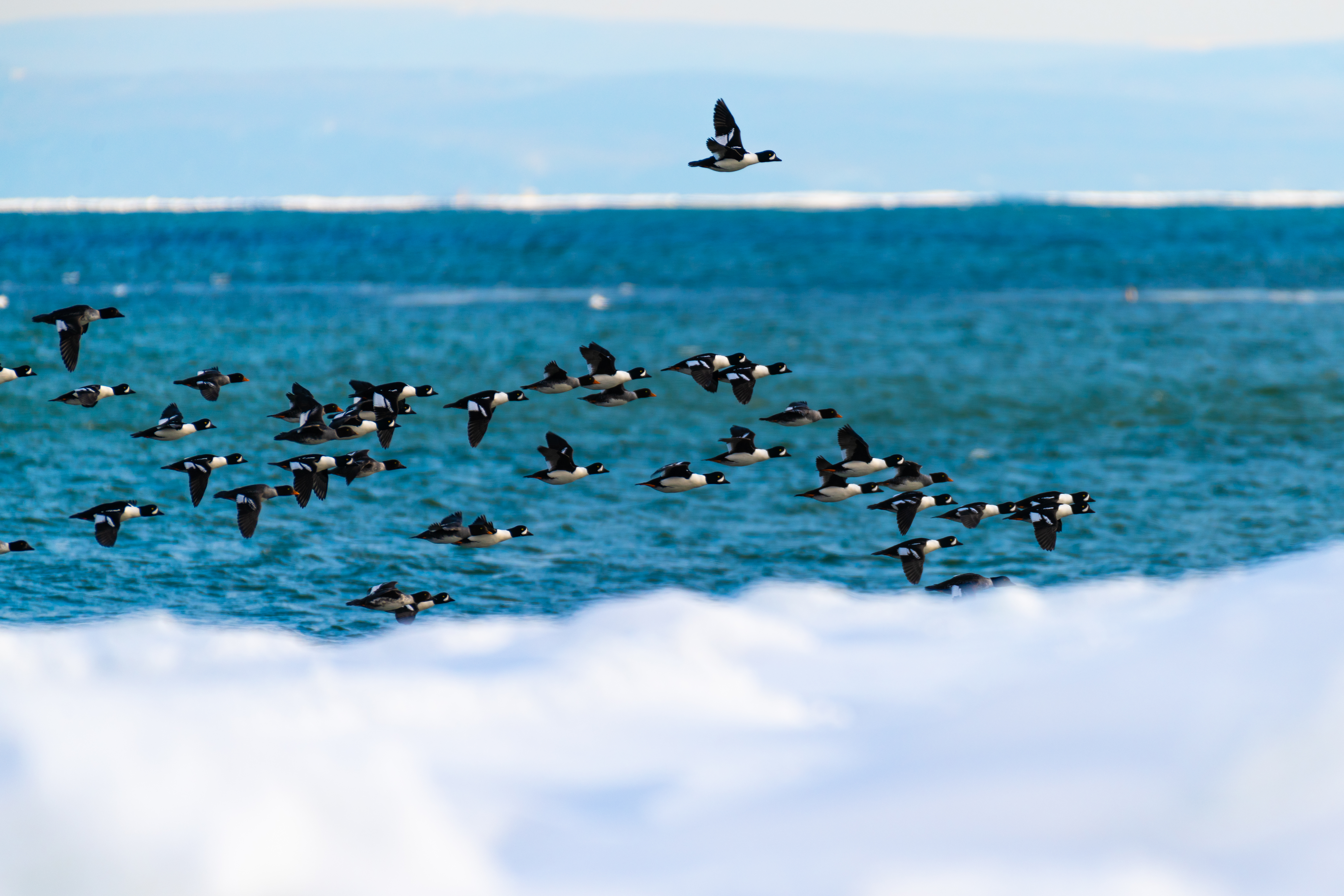Saturday, September 17: The weather is beautiful and the participants of the Béluga Ultra Trail (web page in French) race have already set out to tackle the 45 km that separate the starting line in Baie-Sainte-Marguerite from the finish line in Tadoussac. More than just a competitive jog, this race aims to raise public awareness of the plight of the endangered Saint Lawrence beluga. At the end of the event, the funds raised will be used to collectively “adopt” a beluga to support GREMM in its research activities dedicated to this species at risk.
It’s 9 a.m. and I return to my post at the emergency centre in Tadoussac. I phone one of Fisheries and Oceans Canada’s research centres, the Maurice Lamontagne Institute in Mont-Joli, which is responsible for handling any phone calls that come in at night. First message: “Yes, there’s a dead beluga in Rimouski…!” The report was made at 8:15 this morning. I request the information provided by the witness and promptly get in touch with her. The latter returns to the scene of the observation to take a few photos and follow the movements of the carcass as it rocks back and forth in the surf. Once we have confirmation of the species and its accessibility, an action plan is put into place. The South Shore response team, which is already in Rimouski, is contacted to recover the whale. Our research partners are informed and the team at the Centre québécois pour la santé des animaux sauvages (CQSAS) is advised that a recovery attempt will be made. As they are the ones who will perform the necropsy, they must be ready to receive the carcass at Université de Montréal’s Faculty of Veterinary Medicine (FMV) in Saint-Hyacinthe.
The response team arrives on site at 10:00 a.m. and the first pieces of information are transmitted to the emergency centre. It is an adult male measuring 4.2 metres long. Distinctive markings between the animal’s melon and its blowhole are intriguing. This whale may already be “known,” meaning that if this individual has previously been photographed by the research team, it might be able to be matched with an individual that has already been attributed a name and number. This practice is useful for keeping a record of events throughout an animal’s lifetime and to carry out rigorous follow-up with the members of this fragile population. The team carries out an exhaustive documentation of the animal: biopsies, measurements, detailed photos of each marking and lesion, the dorsal ridge, pectoral fins, tail, etc. Even the location and accessibility of the carcass are photographed. It is important to know how to go about the recovery in order to keep track of different types of recovery efforts and improve our responses in the field.
Once the documentation is complete, a recovery plan is developed and carried out. The site of the stranding is difficult to access by vehicle, so we will have to attempt a recovery from the water. Shortly after the QMMERN team arrives at the marina, an employee offers the use of his excavator to lift the carcass. The response team prepares a net around the carcass as the excavator makes its way over the wet rocks to the beached beluga. Once fastened to the machinery, the animal is lifted with great care so as not to damage the carcass. All that remains now is to make the hazardous journey to the marina, where the response team’s truck is parked. This entails passing over slippery rocks with a load that, depending on the individual, can vary between 0.7 to 1.5 tonnes!
At 4 p.m., a member of the response team informs me that the carcass has been properly loaded into the truck and is ready to be transported. A member of the team will now have to make the long trek to Saint-Hyacinthe to deliver the carcass to FMV veterinarians, who will perform a comprehensive necropsy to determine the cause of the animal’s death.
As for me, I still have to sort through the documentation photos, follow up with the witnesses and advise our partners that the carcass has been recovered. Each and every individual is valuable for the conservation of the St. Lawrence beluga population. Small, isolated and fragile, the resident population of the estuary poses major challenges for conservation. When dealing with a population of fewer than 1,000 individuals, every carcass is extremely important.
Soizic Percevault







